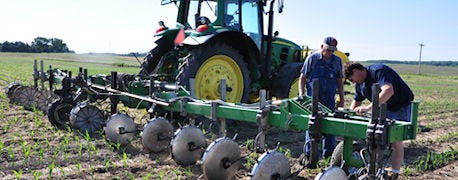January 28, 2013

Cover crops—and old practice that's being revived for soil conservation and soil building reasons—aren't yet in widespread use in corn and soybean operations. But the practice is growing.
In Iowa, for instance, cover crop acres in the EQIP program in Iowa jumped from 4,000 acres four years ago to more than 50,000 acres last year. Indiana is said to have about a million acres of cover crops. Incentives are being offered in many states because the practice can save soil, build soil, and improve water quality.

Our 2012 Rye Cover Crop Calendar
While many first-time users say they choose cover crops for soil conservation purposes, there are many other reasons covers are once again becoming popular. Increasing soil organic matter, reducing soil compaction, increasing water infiltration, reducing inputs, and building better soil structure are among the advantages cover crops have shown.
Most farmers using cover crops are also no-till farmers. The two practices fit hand in glove to literally bring the soil alive as they provide the environment that soil-building microbes need to thrive.
Steve and Dennis Berger of Wellman, Iowa, have used no-till for years—this crop year will be the 35th consecutive year one of their fields has been farmed without tillage. They also have a good deal of experience in using cover crops with no-till, having planted cereal rye for more than 10 years each fall on corn and soybean land.
The two are now 100% no-till and 100% rye cover crop on their 2,000 acres of corn and soybean land. They like to keep their land covered with something green and growing for as much as the year as possible.
I tried to follow the Bergers through their key operations in 2012, taking photos of what they do and when to successfully protect their land investment and produce viable crops.
If you're already using cover crops, you'll probably relate to the actions the Bergers take each year to include a rye cover in their operation. If you're considering using rye as a cover crop, we hope the photos, timing, and comments will give you a better idea of what steps you may want to take as you move into cover crops on your land.
You May Also Like




